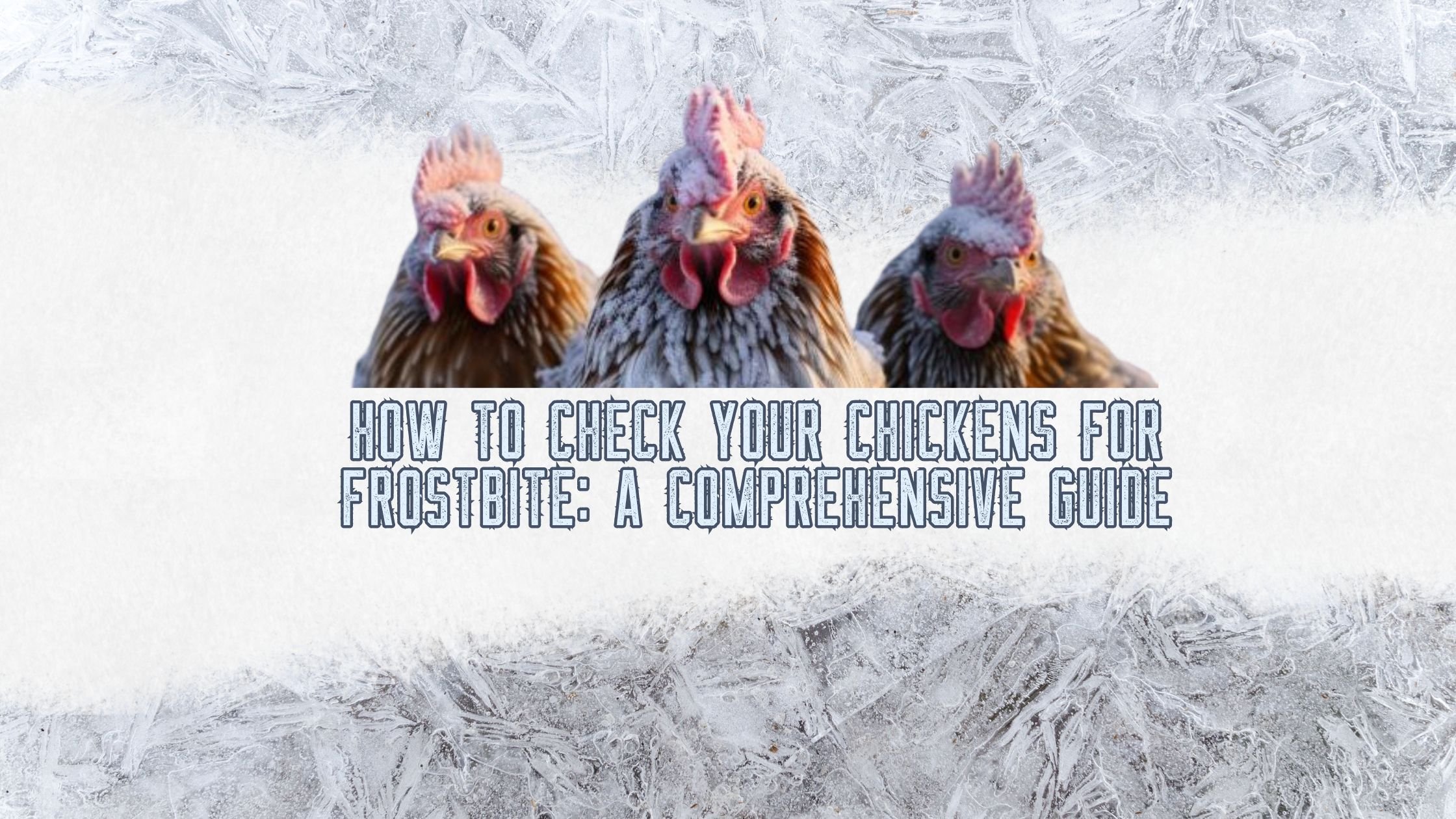How to Check Your Chickens for Frostbite: A Comprehensive Guide
Frostbite is a common concern for chicken keepers during the cold months. As we delve into the depths of January, it's crucial to be vigilant about the health of your feathered friends. Frostbite can affect combs, wattles, and even your chickens' feet, leading to serious health issues if left unchecked. In this blog post, we'll guide you through the steps to effectively check your chickens for frostbite and provide practical tips to prevent it.
Understanding Frostbite in Chickens
Firstly, it's essential to understand what frostbite is and why it occurs. Frostbite happens when the skin and other tissues freeze due to exposure to frigid temperatures. In chickens, the most susceptible areas are the extremities, like the comb, wattles, and toes. These body parts are more exposed and have less blood flow in cold weather, making them prone to freezing.
Signs of Frostbite in Chickens
The initial signs of frostbite include pale, grayish, or bluish discoloration of the affected area. As it progresses, these areas may turn black, indicating dead tissue. In severe cases, the affected parts may eventually fall off. Other signs to look out for include swelling, blisters, and a reluctance to walk or eat.
Step-by-Step Guide to Checking Your Chickens for Frostbite
Prepare for Inspection: Choose a time when your chickens are calm, such as during their roosting time in the evening. Gently handle your birds to reduce stress.
Check the Comb and Wattles: Carefully examine the comb and wattles for any discoloration, swelling, or unusual texture. These are the most common areas for frostbite.
Inspect the Feet: Look at the toes and the bottom of the feet. Check for any blackened areas or signs of swelling.
Observe Behavior: Pay attention to how your chickens are walking. Limping or reluctance to walk can be a sign of frostbitten feet.
Note Any Changes: Keep a record of any changes you notice over time. This can help you determine if the condition is worsening or improving.
Preventing Frostbite in Chickens
Prevention is always better than cure, especially when it comes to frostbite in chickens. Here are some effective ways to prevent frostbite:
Provide a Dry and Well-Ventilated Coop: Moisture is a major contributor to frostbite. Ensure your coop is dry and has good ventilation to prevent dampness without causing drafts.
Use Flat Roosts: Flat roosts allow chickens to cover their feet with their bodies while roosting, protecting them from the cold.
Apply Petroleum Jelly: For breeds with large combs and wattles, apply a thin layer of petroleum jelly. This acts as an insulator against the cold.
Ensure Adequate Nutrition: A well-balanced diet helps maintain overall health, making chickens more resilient to cold.
Avoid Overheating the Coop: Surprisingly, heating the coop can do more harm than good. Chickens acclimatize to cold temperatures, and sudden changes can make them more susceptible to frostbite.
Provide Windbreaks: Protect your outdoor areas with windbreaks to reduce exposure to cold winds.
What to Do If You Suspect Frostbite
If you suspect your Chicken has frostbite, it's important to act cautiously:
Do Not Thaw Quickly: Never use direct heat to thaw frostbitten areas. This can cause more damage.
Move to a Cooler Area Gradually: Gradually bring the affected Chicken to a slightly warmer area to slowly thaw the frostbitten parts.
Consult a Veterinarian: In cases of severe frostbite, it's best to consult a veterinarian for proper treatment.
Keep the Chicken Comfortable: Provide a comfortable and stress-free environment for your Chicken to recover.
Monitor for Infection: Watch for signs of infection in the affected areas, such as redness, swelling, or discharge.
Regular checks for frostbite during the cold months are an essential part of chicken care. Understanding what to look for and taking preventative measures can keep your flock healthy and happy throughout the winter. Remember, the key to preventing frostbite is maintaining a dry, well-ventilated coop, providing adequate nutrition, and minimizing exposure to extreme cold. Stay attentive to your chickens' needs, and they will thrive even in the chill of January!

